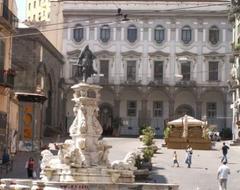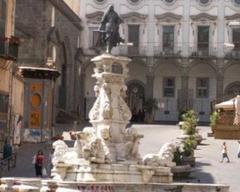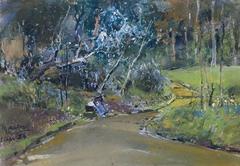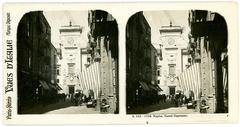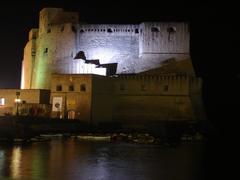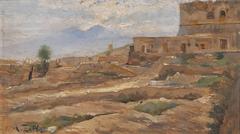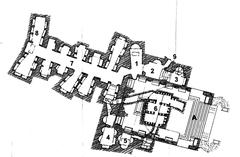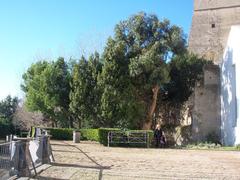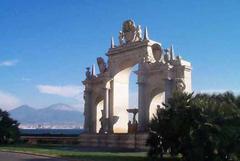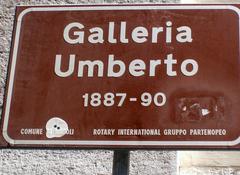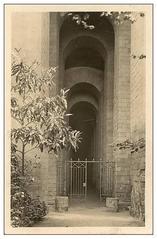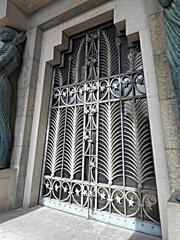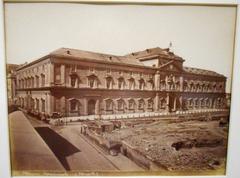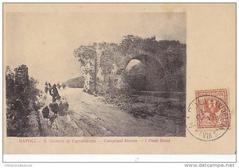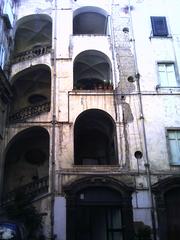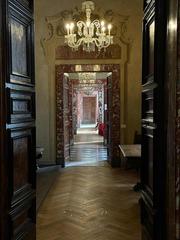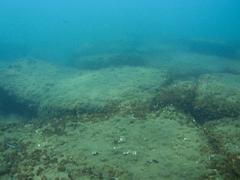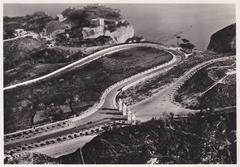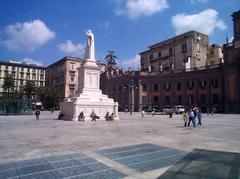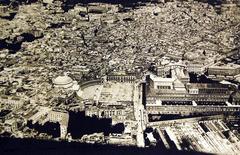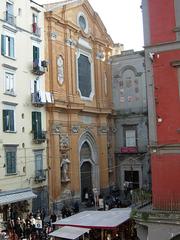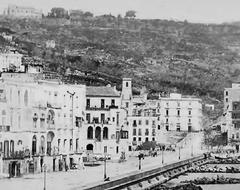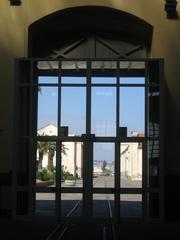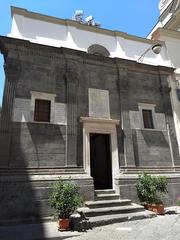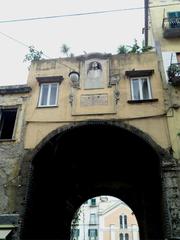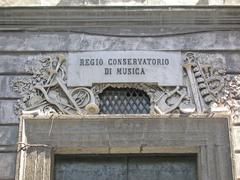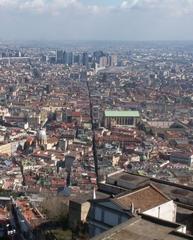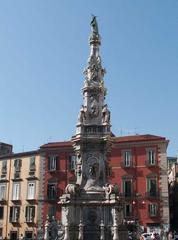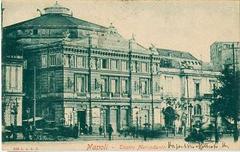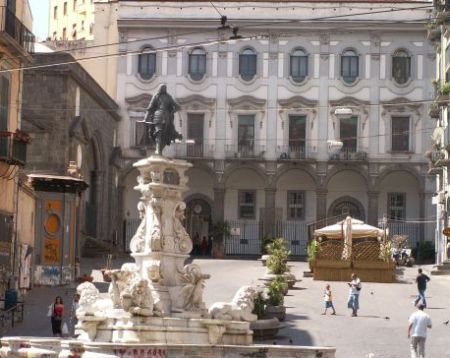
Visiting Fontana di Monteoliveto in Naples: Hours, Tickets, and Tips
Date: 22/07/2024
Introduction
The Fontana di Monteoliveto, also known as the Fountain of Charles II, is a captivating Baroque masterpiece located in the heart of Naples, Italy. Constructed between 1668 and 1673, this historic fountain was commissioned by the Spanish Viceroy of Naples, Pedro Antonio de Aragón, and designed by renowned Baroque architect Cosimo Fanzago. The fountain is not only a stunning piece of art but also a symbol of the Spanish monarchy’s power and the rich cultural heritage of Naples. Visitors to the Fontana di Monteoliveto can marvel at its intricate sculptures, allegorical figures, and dynamic water features, all crafted from white marble. The fountain’s central figure, Charles II of Spain, stands as a testament to the political and cultural climate of Naples during the Spanish rule. (Naples Tourism, Italian Art)
This comprehensive guide aims to provide all the necessary information for anyone planning to visit Fontana di Monteoliveto. From its historical background and architectural features to practical visitor information, travel tips, and nearby attractions, this guide covers everything you need to know to make the most of your visit. Whether you are a history enthusiast, an art lover, or simply looking to explore one of Naples’ most cherished historical sites, the Fontana di Monteoliveto offers a unique and enriching experience.
Table of Contents
- Introduction
- History of Fontana di Monteoliveto
- Visitor Information
- Cultural Impact and Preservation Efforts
- Modern-Day Relevance
- FAQ Section
- Conclusion
- Sources
History of Fontana di Monteoliveto
Origins and Construction
The Fontana di Monteoliveto, also known as the Fountain of Charles II, is a historic fountain located in Naples, Italy. Its construction dates back to the early 17th century, specifically between 1668 and 1673. The fountain was commissioned by the Spanish Viceroy of Naples, Pedro Antonio de Aragón, as part of a broader urban renewal project aimed at beautifying the city and providing public amenities.
The fountain was designed by the renowned architect Cosimo Fanzago, who was a prominent figure in Baroque architecture. Fanzago’s design incorporated intricate sculptures and elaborate decorations, making the fountain not only a functional public utility but also a work of art. The fountain’s construction was part of a larger trend during the Baroque period, where public fountains were used to demonstrate the wealth and power of the ruling class.
Architectural Features
The Fontana di Monteoliveto is characterized by its elaborate Baroque style, which includes a combination of classical and mythological elements. The fountain is made of white marble and features a central basin with a series of smaller basins arranged in a tiered fashion. The central figure of the fountain is a statue of Charles II of Spain, who was the reigning monarch at the time of the fountain’s construction. The statue is depicted in a regal pose, emphasizing the power and authority of the Spanish crown.
Surrounding the central statue are various allegorical figures representing the rivers of Naples, including the Sebeto River. These figures are depicted in dynamic poses, with water flowing from their mouths and other parts of their bodies, creating a sense of movement and vitality. The fountain also features intricate carvings of sea creatures, such as dolphins and tritons, which are common motifs in Baroque art.
Historical Significance
The Fontana di Monteoliveto holds significant historical importance as it reflects the political and cultural climate of Naples during the Spanish rule. The fountain was not only a symbol of the Spanish monarchy’s power but also a testament to the city’s artistic and architectural achievements. The commissioning of such an elaborate fountain demonstrated the Viceroy’s commitment to enhancing the city’s public spaces and providing amenities for its residents.
Throughout its history, the fountain has undergone several restorations to preserve its original beauty and functionality. One notable restoration took place in the 19th century, during which the fountain’s sculptures and carvings were meticulously cleaned and repaired. More recently, in the early 21st century, the fountain underwent another restoration to address issues related to water damage and structural integrity.
Visitor Information
Visiting Hours and Ticket Prices
The Fontana di Monteoliveto is accessible to the public at any time, as it is located in an open square. There are no ticket prices for visiting the fountain itself, making it an ideal spot for those looking to explore Naples’ historical sites on a budget.
Travel Tips and Accessibility
The fountain is located in the heart of Naples, making it easily accessible by foot or public transportation. Nearby metro stations and bus stops provide convenient options for visitors. The area around the fountain is pedestrian-friendly, and there are several cafes and restaurants where visitors can relax and enjoy the view.
Nearby Attractions
While visiting the Fontana di Monteoliveto, be sure to explore other nearby attractions such as the Gesù Nuovo Church, the Santa Chiara Monastery, and the Naples National Archaeological Museum. These sites offer a deeper insight into the rich history and culture of Naples.
Special Events and Guided Tours
Occasionally, special events and guided tours are organized around the fountain. These tours often provide in-depth information about the fountain’s history, architecture, and cultural significance. Check with local tour operators or the Naples Tourism Board for schedules and bookings.
Photographic Spots
The Fontana di Monteoliveto is a popular spot for photography enthusiasts. The intricate details of the fountain, combined with its historical backdrop, make for stunning photographs. Early morning or late afternoon light provides the best conditions for capturing its beauty.
Cultural Impact and Preservation Efforts
Cultural Impact
The Fontana di Monteoliveto has played a significant role in the cultural life of Naples. It has been a popular gathering spot for locals and tourists alike, serving as a place for social interaction and relaxation. The fountain’s location in the heart of the city makes it easily accessible, and its stunning design continues to attract visitors from around the world.
In addition to its aesthetic and social functions, the fountain has also been featured in various works of art and literature. It has been depicted in paintings, photographs, and postcards, capturing its timeless beauty and historical significance. The fountain has also been mentioned in literary works, highlighting its importance as a cultural landmark in Naples.
Preservation Efforts
Preserving the Fontana di Monteoliveto has been a priority for local authorities and cultural organizations. Given its historical and artistic value, efforts have been made to ensure the fountain remains in good condition for future generations to enjoy. These efforts include regular maintenance, cleaning, and structural assessments to address any potential issues.
One of the challenges in preserving the fountain is the impact of environmental factors, such as pollution and weathering. To mitigate these effects, protective measures have been implemented, including the use of specialized cleaning techniques and materials that are compatible with the fountain’s original construction. Additionally, public awareness campaigns have been launched to educate residents and visitors about the importance of preserving this historic landmark.
Modern-Day Relevance
Today, the Fontana di Monteoliveto continues to be a cherished symbol of Naples’ rich history and cultural heritage. It stands as a testament to the city’s artistic achievements and serves as a reminder of the important role public art plays in enhancing urban spaces. The fountain’s enduring appeal lies in its ability to connect the past with the present, offering a glimpse into the city’s storied history while remaining a vibrant part of its contemporary landscape.
For visitors to Naples, the Fontana di Monteoliveto is a must-see attraction. Its central location makes it easily accessible, and its stunning design provides a perfect backdrop for photographs and leisurely strolls. Whether you are a history enthusiast, an art lover, or simply looking to experience the beauty of Naples, the Fontana di Monteoliveto offers a unique and memorable experience.
FAQ Section
What are the visiting hours for Fontana di Monteoliveto?
The Fontana di Monteoliveto is accessible to the public at any time, as it is located in an open square.
How do I get tickets for Fontana di Monteoliveto?
There are no ticket prices for visiting the fountain itself.
What are some nearby attractions?
Nearby attractions include the Gesù Nuovo Church, Santa Chiara Monastery, and the Naples National Archaeological Museum.
Are there guided tours available?
Yes, guided tours are occasionally organized. Check with local tour operators or the Naples Tourism Board for schedules and bookings.
Conclusion
In conclusion, the Fontana di Monteoliveto stands as a remarkable testament to the artistic and cultural heritage of Naples. Its intricate Baroque design, historical significance, and ongoing cultural impact make it a must-visit destination for anyone exploring the city. The fountain’s accessibility, central location, and proximity to other notable attractions such as the Gesù Nuovo Church and the Naples National Archaeological Museum further enhance its appeal to visitors. Preservation efforts and community involvement continue to ensure that this iconic fountain remains a cherished symbol of Naples’ rich history for future generations. (History of Naples, Baroque Art Studies)
Whether you are capturing its beauty through photography, delving into its historical significance through guided tours, or simply enjoying a leisurely stroll around its surroundings, the Fontana di Monteoliveto offers a memorable and enriching experience. Don’t miss the opportunity to explore this iconic fountain during your visit to Naples. For more travel tips and updates, follow us on social media or check out our related posts.
Sources
- Exploring the Fontana di Monteoliveto - History, Visiting Hours, and Tickets in Naples, 2023, Naples Tourism
- Exploring Fontana di Monteoliveto - History, Visiting Tips, and Nearby Attractions in Naples, 2023, Italian Art
- Complete Guide to Visiting Fontana di Monteoliveto in Naples - Hours, Tickets, and Tips, 2023, History of Naples
- Complete Guide to Visiting Fontana di Monteoliveto in Naples - Hours, Tickets, and Tips, 2023, Baroque Art Studies
